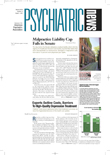Psychiatrists and advocates for the mentally ill have their radar finely tuned to pick up stigmatizing messages in print, on the airways, and on the big screen. But a recent study at one medical school found another venue where negative views of psychiatry and people with mental illness are common.
Unfortunately, that place is in the classrooms and hospitals that are training the next generation of physicians, according to data presented at the June meeting of the Association of Directors of Medical Student Education in Psychiatry (ADMSEP) in Jackson Hole, Wyo.
Nutan Vaidya, M.D., interim chair of the psychiatry department at Chicago Medical School and director of medical student education in psychiatry, said she found the results of her survey of the attitudes of second-year medical students toward patients with psychiatric and neurological disorders “pretty depressing.”
Vaidya expected that once medical students were exposed to psychiatric and neurological illnesses and patients in their preclinical didactic classes (and then in their third-year clerkships), they would exhibit positive changes in their attitudes toward patients in these two medical areas.
“When students are more confident” in their ability to recognize psychopathology and have learned that these illnesses are treatable, they would be expected to develop a more positive attitude toward psychiatric patients and their illnesses, Vaidya said.
What she found, however, was that the students’ attitudes did not turn out to be as positive after exposure to extensive course work in psychiatry and neurology as she had hypothesized.
Vaidya used a survey instrument called the Medical Condition Regard Scale (MCRS), which was developed by psychiatrist George Christison, M.D., and colleagues at Loma Linda University medical school. Subjects taking the MCRS indicate their attitudes toward particular illnesses on a six-point scale that ranges from “strongly disagree” to “strongly agree.” Eighty students responded.
She found that not only were attitudes of some of the sophomore medical students negative, but 28 percent said they did not find working with anxiety disorder or schizophrenia patients satisfying. In addition, 17 percent said they prefer not even to work with anxiety disorder patients, and more than 1 out of 3—35 percent—did not want to work with patients who have schizophrenia.
Also troubling, Vaidya noted, was that 25 percent of the students said they did not feel compassionate toward anxiety disorder or schizophrenia patients, while about 15 percent labeled both groups of patients “irritating.” In addition, 10 percent said there should not be insurance parity for anxiety disorder treatment, and 2 percent said the same for schizophrenia.
The attitudes of the students she surveyed may also bode poorly for future care of Alzheimer’s patients. Twenty-nine percent of the students said that they find working with these patients unsatisfactory. Thirty-one percent said that they would prefer to avoid working with such patients. Fourteen percent indicated they did not feel compassionate toward Alzheimer’s patients, and 4 percent did not think there should be insurance parity for Alzheimer’s disease care.
“In general, we found that the more chronic the disorder, the more negative the attitudes,” Vaidya noted.
While she found the survey results discouraging—and pointed out that they were only for one medical school—she said psychiatric educators could take heart from the fact that a majority of the medical students did indicate positive attitudes toward patients with anxiety disorders, schizophrenia, and Alzheimer’s disease and toward their ability to treat them compassionately.
Looking at the bright side, she said that her survey of students’ attitudes indicates “that the majority come in with positive attitudes, so the change is not significant.” In addition, these second-year students have not yet had the opportunity to see how medical interventions can actually improve the condition of psychiatric patients with chronic disorders, she suggested.
“The average physician should have a positive attitude toward psychiatric patients,” Vaidya said. “We [educators] want to make sure that our students don’t exhibit the same prejudice toward the mentally ill” as a large portion of the general public does. ▪

